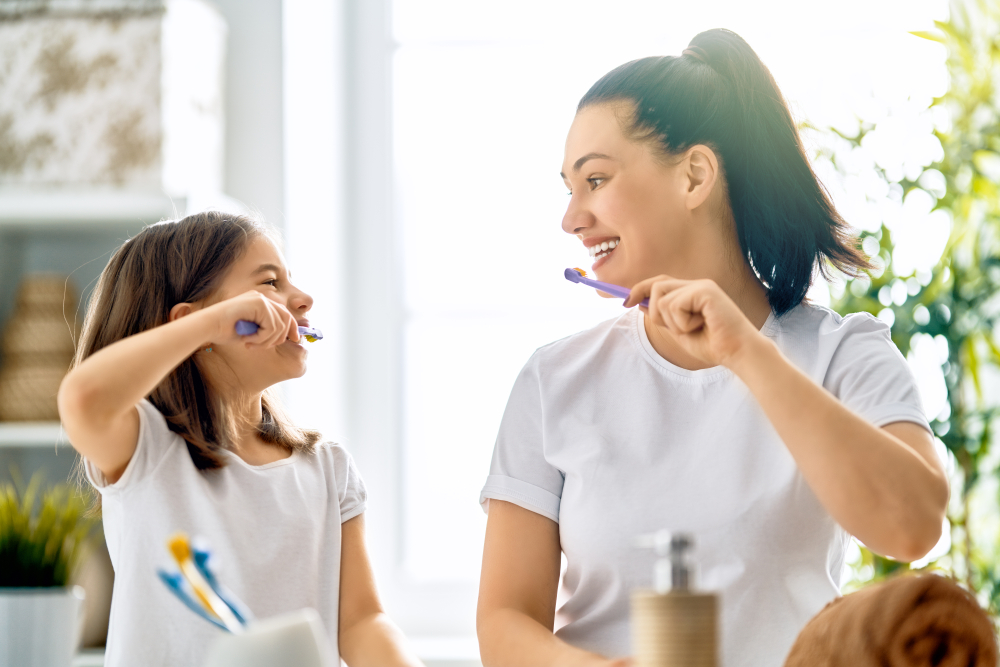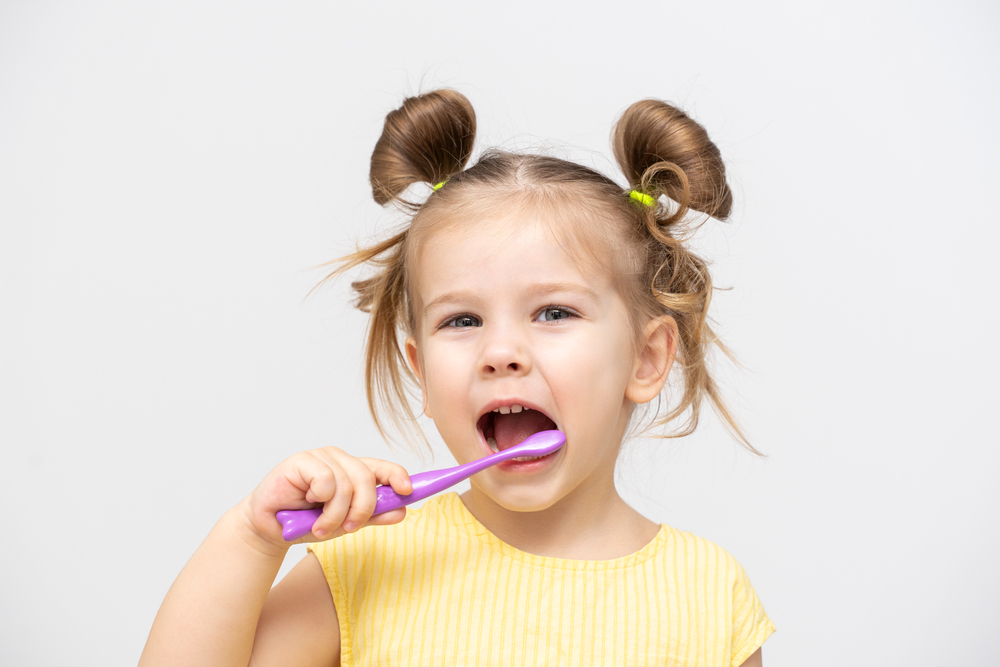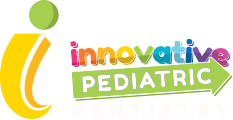

Table of Contents
Teach a Child to Practice Good Oral Hygiene Early On:
Figuring out how to teach a child to practice good oral hygiene can be tough, especially if your little one is resistant. However, the good news is, as a Naperville dentist for kids, we have the expertise to not only keep kids’ teeth healthy but to also guide you, as a parent or guardian, in teaching your child oral hygiene. With the right strategies, your kiddo will be able to develop a strong homecare routine that promotes lifelong oral health.
In this post, we’ll talk about:
- When to Start Brushing Your Baby’s Teeth?
- The Basics of Brushing and Flossing Your Toddler’s Teeth
- 8 Tips for How to Teach a Child to Practice Good Oral Hygiene
When to Start Brushing Your Baby’s Teeth?
Good dental hygiene should start when your child is still an infant. Once your baby is finished eating, whether breast milk or formula, wipe down their gums using a moist washcloth. While, of course, at this stage, you’re not necessarily teaching a child how to practice good oral hygiene, you are getting into a routine and establishing the foundation, which will make it easier when they get older.
When your baby begins eating solid food and starts teething, you can use a finger brush. This brush is made out of rubber, has soft bristles and slips onto your index finger comfortably. Gently rub the finger brush along your baby’s gum line and around the emerging teeth.
You can start brushing your baby’s teeth when the first tooth fully erupts. Use the finger brush or a soft-bristled, infant-sized toothbrush and a tiny smear of fluoride toothpaste, no larger than a grain of rice, to brush twice a day.
Schedule your child’s first visit with a pediatric dentist by their first birthday. This will help your child build a rapport with the dentist and get used to the sights and sounds of the office. The dentist will also make sure your child’s little teeth and gums are healthy and their development is on track, as well as partner with you in teaching your child oral hygiene.
The Basics of Brushing and Flossing Your Toddler’s Teeth
Now that your child has been to the dentist and has a mouth full of pearly whites, if you haven’t moved on to a toothbrush, it’s time to do that. Does the toothbrush matter? Yes, the type of toothbrush does matter. Use a child-sized, soft-bristled toothbrush since toothbrushes with firm bristles can cause irritation in a little one’s mouth and could discourage them from brushing.
Along with an appropriate toothbrush, continue using a smear of fluoride toothpaste up until age 3, at which point you can graduate to a pea-sized amount. Fluoride for kids is important. The naturally-occuring mineral strengthens the enamel and gets incorporated into the permanent teeth, making them more resistant to decay. However, too much fluoride for kids can be a bad thing and lead to fluorosis. Using only the recommended amount of toothpaste and talking with your dentist about your child’s fluoride intake will prevent this.
When you’re first teaching your child how to brush their teeth, it’s recommended that you do the brushing for them. Kids may not know how to properly hold a toothbrush and most don’t have the dexterity or motor skills to effectively eliminate plaque.
When brushing kids’ teeth, stand behind them and reach around them to hold the toothbrush in a way that’s comfortable. Ask your child how it feels. If it hurts, stop and make sure the gums aren’t irritated. For really squirmy toddlers who don’t like brushing, sit on the bed or the floor and have your child lie with their head in your lap. This will give a bit more control.
Brush your toddler’s teeth twice a day. When their teeth begin touching, start flossing your child’s teeth once daily. As you brush and floss, narrate what you’re doing so your little one begins to grasp the concept. Around the age of two or three, you can let your child brush their teeth on their own and then you can do a follow-up to make sure they didn’t miss any areas. This will help them develop some independence and learn the proper technique.
8 Tips for How to Teach a Child to Practice Good Oral Hygiene
Towards the end of the toddler years, ramp up your teaching efforts so your child understands the importance of oral health and knows what to do to achieve it. Not sure where to start? Try these 8 tips for teaching your child oral hygiene:
-
Let your child brush their own teeth but supervise their efforts until age 7 or 8 when they’re able to brush effectively. Having them brush in the mirror can help them see what they’re doing.
-
Use a toothbrush timer app or an actual physical timer to help kids brush their teeth for two full minutes each session.
-
Brush along with your child. Show them how to brush all the way to the back molars and along the gum line.
-
Explain to your child what will happen if they don’t brush their teeth or brush them well enough. Talk to them about the causes of tooth decay in children, what cavities are and why it’s best to avoid them. Don’t scare them or use terms like “drill” or “hurt” when talking about the dentist. Instead, give them an overview of why oral hygiene is so important using kid-friendly, positive terms.
-
Just like with brushing, floss for your child until they have the dexterity to do it on their own, usually around age 10. Once they’re older, you can floss your teeth in front of them and walk them through the technique.
-
Fun, kid-themed toothbrushes and tasty toothpastes can go a long way in helping kids get excited about oral hygiene. As for the best toothpaste for kids, we recommend a fluoride toothpaste with the ADA seal of approval.
-
Keep up with regular check-ups and cleanings at the pediatric dentist. We’ll make sure your child’s teeth and gums are healthy and evaluate how they’re doing with brushing and flossing. We’ll also educate you and your child on a variety of oral hygiene topics, including diet, homecare, fluoride for kids, oral habits and more.
-
Make flossing and brushing teeth for kids fun. You can follow all of the guidelines in the world for how to teach a child to practice good oral hygiene, but if brushing and flossing are constantly a negative experience, they won’t want to do it. Things like brushing to two minutes songs, brushing teeth as a family and turning oral hygiene into a game can make kids more likely to stick with it and want to learn. (For more ideas on how to make brushing teeth fun, download our free brushing guide.)
Following our tips for how to teach a child to practice good oral hygiene and talking about oral health from an early age will encourage kids to develop excellent habits that can last a lifetime. If you’re looking for the best pediatric dentist in Naperville or you’d like personalized guidance to help your child maintain a strong, bright smile, schedule an appointment at Innovative Pediatric Dentistry today!


